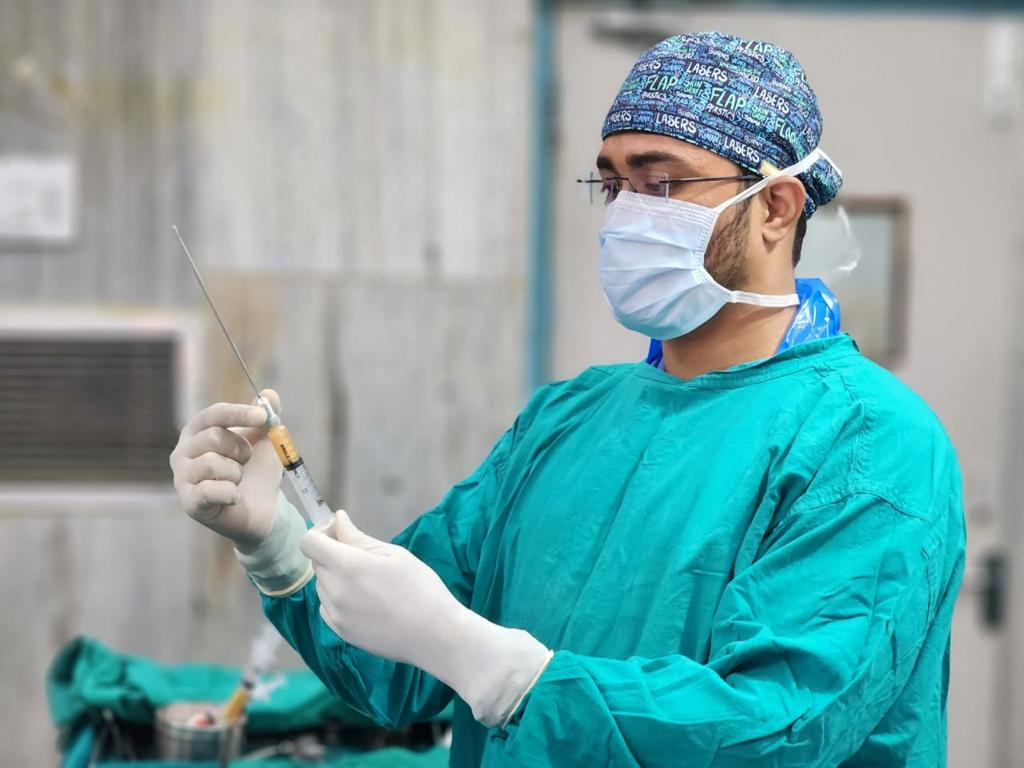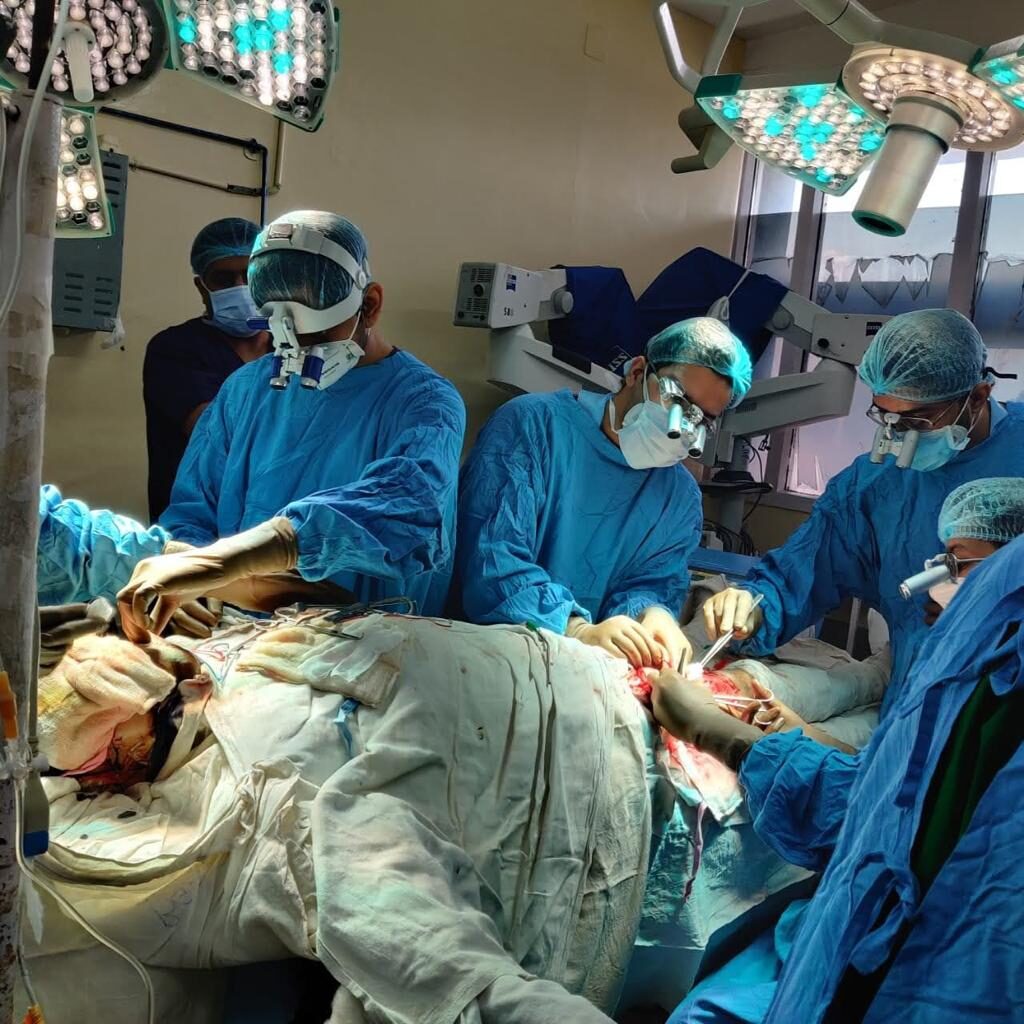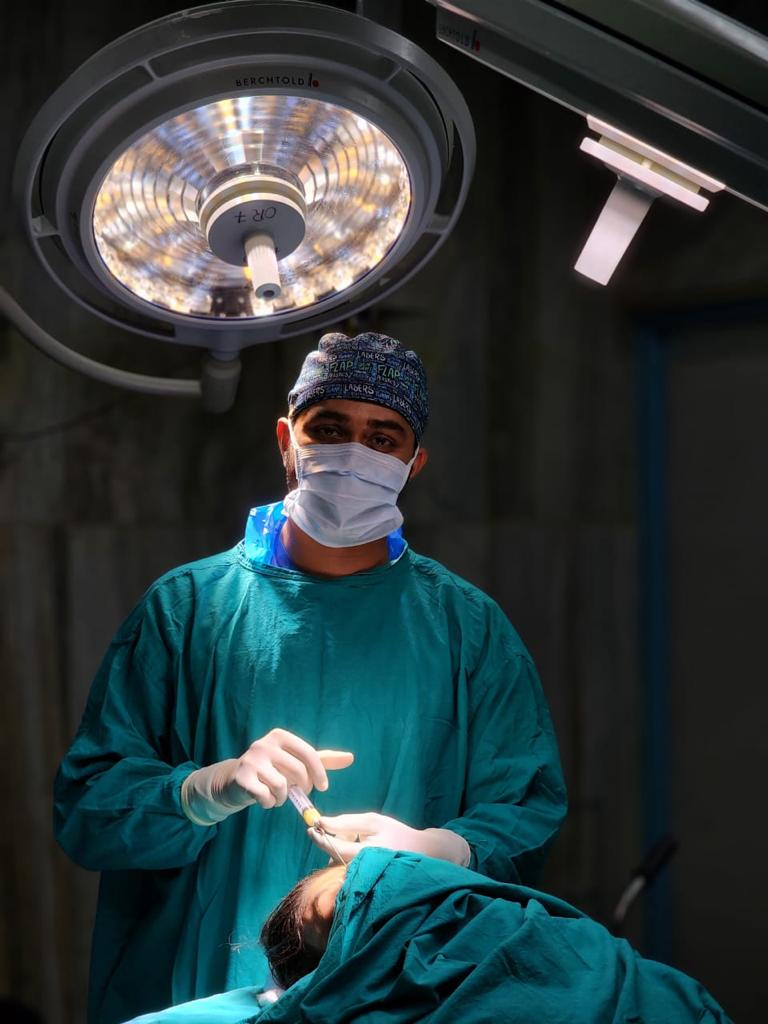
1. How would you explain your profession as a plastic surgeon to a 10-year-old child?
The first thing that comes to mind when one thinks of a Plastic Surgeon is Cosmetic Surgery. And thanks to our movies and TV most people think we magically change people’s faces to look like someone else.
However, a Plastic Surgeon is much more than that!
The “Plastic” in “Plastic Surgery” is derived from the Greek word ‘plastikos’ meaning ‘to mould’.
A Plastic Surgeon is one who has completed 3 years of Superspeciality MCh training in Plastic Surgery after completing M.S.
A Plastic Surgeon is a Surgeon’s Surgeon – what that means is that a Plastic Surgeon is often called by other surgeons to manage large and difficult wounds using flaps.
Say for instance, a patient comes to an Orthopaedic Surgeon with a fracture of the leg along with extensive skin and tissue loss and exposed bone, then the Ortho Surgeon will fix the fractured bones but he will require help to cover the exposed bone and replace the lost tissue and skin. Thats when he will call the Plastic Surgeon – who will then replace this tissue loss by taking tissue from elsewhere in the body and cover the exposed bone using Microsurgery.
Another instance where a Plastic Surgeon is required is in Onco-reconstruction. Here, after the OncoSurgeon has removed the tumor there will be a large defect where the tumor once was. The Plastic Surgeon will then come in and cover that defect using tissue from other parts of the body and RECONSTRUCT this defect. He/she will try to make it look as close to normal as possible so that the patient can ultimately have a good form, function, aesthesis and quality of life after major surgery.
Hence, a Plastic Surgeon is also called a Reconstructive Surgeon.
A Plastic Surgeon is also trained in Cosmetic/Aesthetic surgery.
Procedures that enhance the aesthesis of the face or body are cosmetic procedures. Examples of these procedures include Rhinoplasty, hair transplant, breast enhancement, Liposuction and fat grafting, Gynecomastia, Botox and fillers injection etc.
So the spectrum of Plastic Surgery is very wide. And after your training is complete one can choose to be either a Cosmetic/Aesthetic surgeon or a Reconstructive Surgeon or both!
(Disclaimer: There is no plastic used in Plastic Surgery 😛)

2. Can you talk about a particularly challenging case you’ve had and how you approached it?
As a reconstructive Plastic Surgeon we get many challenging cases. One in particular that I can remember is of an 8 year old girl who came with complete amputation of her right hand at wrist level. She was playing in the fields of Punjab during harvest season and accidentally inserted her hand into a ‘toka machine’ – an electric harvest machine.
She presented around 8pm in the evening within 2 hours of injury and was immediately shifted to the OR. We divided ourselves into 2 teams. One team quickly explored the amputated part and dissected all the cut structures to be re-attached. Another team explored the stump and prepared it to receive the amputated part. Over the next 8 hours, all the cut tendons, nerves and arteries were repaired and the hand reattached successfully with microsurgery.
The child regained full function of the hand (with some restriction which is expected in such cases) and was even able to hold a pen and start practising to write again.As microvascular surgeons we regularly reattach or “replant” amputated digits and parts in adults. Since this was an 8 year old child, all the structures were much smaller and hence it was particularly challenging.

3. How has your speciality evolved over time, and what challenges do you see on the horizon for your field?
Plastic Surgery is a relatively new field and it gained popularity when Dr. Harold Gillies started reconstructing facial and limb defects in soldiers injured in World War I. He is called the Father of Modern Plastic Surgery.
Thereafter, Plastic Surgery has grown by leaps and bounds. And especially with the advent of the operating microscope, Plastic & Reconstructive Surgery today is among the most sophisticated of surgical branches with a number of options to reconstruct any defect.
The taboo associated with cosmetic/aesthetic surgery is reducing. As now is the age of influencers and social media, the need to look good is gaining importance – A crooked nose is easily correctable with Rhinoplasty, excessive fat around the tummy can be easily removed by liposuction – and these procedures have become safer and more affordable over the years.
Also most of these procedures can be done on Day Care basis with same day discharge and minimum down time.
The challenge facing Plastic Surgery today, especially in India, is the lack of awareness about the procedures that we do – both among the general public as well as among referring doctors. I hope that it changes in the years to come.

4. What approach do you have for patients who want to take a more active role in their healthcare?
At the cost of sounding cliche, eat healthy and ‘on time’, get adequate sleep and sleep ‘on time’, exercise daily or go for a run/walk and maintain a healthy lifestyle.
Avoid smoking (strictly) or excessive alcohol and junk food. Key is to be consistent with a healthy lifestyle until it becomes a habit.
5. How do you manage the balance between your personal life and your demanding work as a doctor?
I have been a solo practitioner for a while and it is difficult to get personal time off work as you need to be available always. But when you are part of a team, it is easier to plan and spend time with family and also do things that you love.
I am lucky to be part of a great team here at KMC Manipal. Team work is always better as there are shared duties and responsibilities. As a result I enjoy my work more and at the same time get to spend quality time with my family which is equally important for me.
Work-life balance is very important. You may not always have time as you take on more responsibilities – later in life – as a husband, a father and a son. In addition to being a doctor, it is imperative that you make time for everything.

6. How often do you encounter overly anxious patients, and how do you approach them in this regard?
Quite often! Whenever I have to suture a laceration over the face, I get asked – “Doctor, will there be a scar?” – Yes, there will always be a scar! The real question is – “will there be a good scar?”
We use very fine sutures, remove sutures early so that the patient has a “good scar” which is hardly visible. Also we hide scars in natural skin creases so as to make them more inconspicuous.
Especially patients seeking cosmetic surgery. Such patients have unrealistic expectations – “Doctor, i want a nose just like Angelina Jolie’s or lips like Aishwarya Rai – and they will have a downloaded picture ready to show you. In such patients it is important to manage expectations and be honest about the possible outcomes of the procedure right from the beginning. Over-promising always leads to disappointment.
Hence, under-promise and over-deliver.

7. Among all the cultural, technological, ethical and vocational challenges & advancements ahead of us, what is your advice to medical students about preparing for it from the beginning?
My advice would be to choose your speciality early. As you navigate your way through medical school, keep an eye out for what excites you. And choose wisely as you will be doing that your entire life!
Associate yourself with research (such as ICMR) in that field early on. Develop a skill toward performing research and becoming research oriented.
Talk to your seniors and people who inspire you in your institute. Ask them their story. That will give you a lot of insight and clarity about what you need to do to get where you need to be.
Another important thing is to develop a habit of investing early. Financial management is a very important skill these days and it will help you in becoming financially independent earlier in life.
And most importantly remember that it is a long and tough road ahead in this exciting field. Be patient and also always learn to enjoy what you do! It is definitely worth it in the end!

For more amazing content like this, head over to our Instagram page by following the link below!